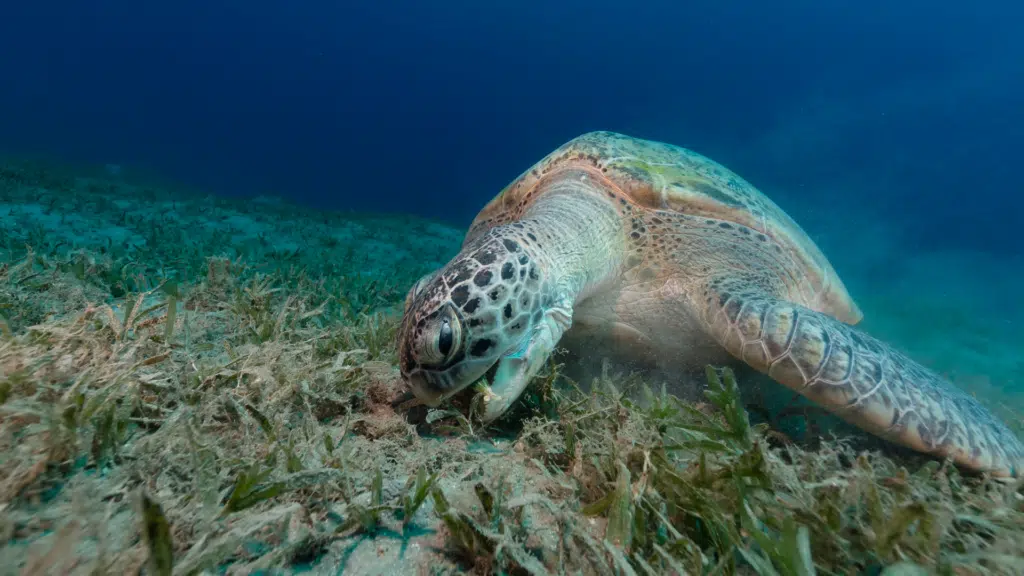Originally posted on Energy Tracker Asia’s website on 26 April 2022
By Eric Koons
The importance of blue carbon systems like mangroves are often underplayed. They have larger carbon absorption capacities than forests, but are often the first to be destroyed during development. Protecting blue carbon sinks is essential for a holistic carbon reduction strategy.
Blue Carbon Ecosystems, Carbon Dioxide Absorption and Coastal Ecosystems
Blue carbon is often the least discussed natural carbon sink, but it is one of the most important. Tropical rainforests, savanna grasslands and continental forests are commonly thought of as carbon-absorbing biological systems. While each of these ecosystems plays an important role, blue carbon ecosystems play a principal role in carbon absorption and carbon storage. Coastal blue carbon ecosystems, such as mangroves, tidal marshes and seagrasses, make up the major blue carbon sinks.
However, while these coastal and marine ecosystems are incredibly efficient in global carbon sequestration and carbon absorption, we underappreciate them and often clear them for urban development, which turns into a source of greenhouse gas emissions. This has led to a call for added conservation measures for blue carbon-related ecosystems.
Mangroves
It can be hard to visualize the importance of an ecosystem – especially one that occurs on 0.1% of the planet’s surface. The importance of tropical rainforests, which also occur within mangroves’ distribution zone, is easy to consider. Places like the Amazon, Central Africa and Southeast Asia evoke images of towering trees and thick forests that scientists and activists are actively trying to protect and conserve due to their ability to absorb carbon. However, scattered across the coasts of tropical nations are mangroves, environments that provide a range of ecosystem services. These include erosion reduction, protection from storms, reduction of wave action, fish nurseries and the world’s highest carbon sequestration rates.
A mature mangrove forest can absorb between 6 to 8 tonnes of CO₂ equivalent per hectare, compared to just above 2 tonnes of CO₂ equivalent for tropical rainforests. Mangroves are the most efficient natural carbon sink on the planet. Considering that tropical rainforests absorb the most CO₂ of all terrestrial forests, mangroves emerge as an unexpected environmental powerhouse. Across global tropical ecosystems, mangrove forests are being increasingly protected and replanted to aid in protecting local environments and helping reduce carbon emissions.

“First, there is a global trend towards the need for nature-based solutions to the climate crisis. Second, there have been many breakthroughs in our understanding of oceans and the way they sequester and store carbon.”
Dan Crockett – Blue Carbon Specialist at the Blue Marine Foundation
Tidal Marshes
Like mangroves, tidal marshes are critical coastal ecosystems. They provide tangible benefits to local food, land and water security. Marshes inhabit rivers and coasts that flood, and they drain depending on the tides. These zones help filter pollutants, maintain water quality in coastal areas and act as an important wildlife ecosystem for migratory birds, fish, shellfish and other marine species. Tidal marshes, another coastal biological hotspot, also have an important role in absorbing carbon.
Their sequestration rate is equivalent to mangroves – at 6 to 8 tons of CO₂ equivalent per hectare – but they have a wider geographical spread. These environments are also subject to increased protection and conservation interest as their ecosystem services have become more acknowledged. Blue carbon programmes involving carbon offsetting and direct conservation monitoring are gaining steam on the international stage.

Seagrasses
Seagrasses are another core ecosystem that provides far more benefits to local and global environments than previously thought. Not to be confused with seaweed, seagrasses resemble their terrestrial namesake and are the only flowering plant that grows in marine environments. Found in temperate and tropical waters, seagrasses help stabilize the substrate, provide shelter for fish and other species and are the primary food source for marine mammals like dugongs and manatees.
In addition to its carbon absorption rate, which is twice as large as tropical forests, seagrasses are essential to blue carbon climate mitigation programmes. Seagrasses account for less than 0.2% of the seafloor, but they sequester approximately 10% of the carbon buried in ocean sediment annually. Often found in conjunction with each other, seagrass meadows, marshes and mangroves will conserve the other and help maintain and compound their services.
Combining Nature-based Solutions like Blue Carbon and Renewable Energy
The demand for ecosystem-focused climate change mitigation programmes is growing. Communities are becoming more aware of nature’s ability to absorb carbon and the services it provides.
An increase in nature-based solutions, like blue carbon, can work together with renewable energy projects. This provides a well-rounded approach to reducing carbon emissions and creating the low-carbon future we need. Coastal ecosystems around the world can be central actors in the transition to sustainable development. Their protection from urban development, fisheries operations and human interactions is necessary.





